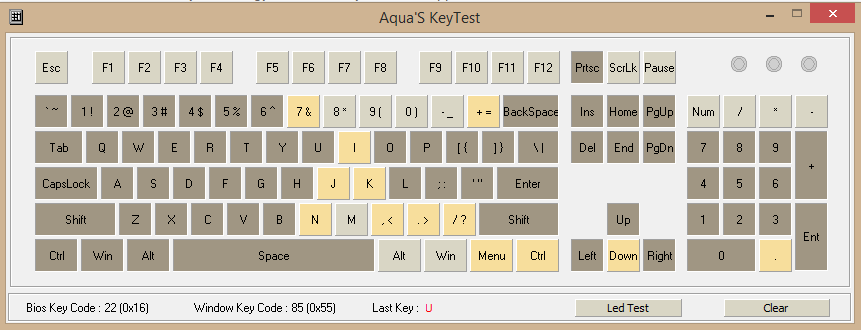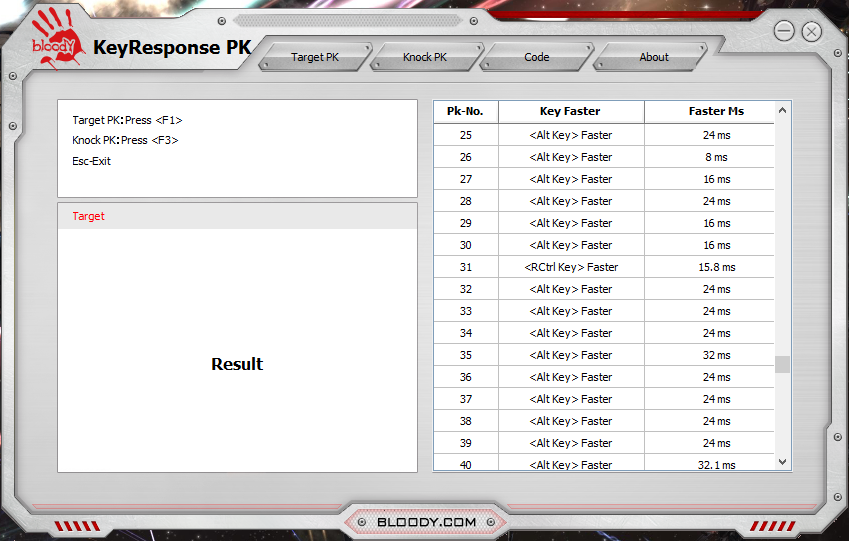Cherry MX 6.0 Mechanical Keyboard – Review
In Practice
I have been able to use the Cherry MX 6.0 board for a while now, even typing this review on it as well. The typing experience has been enjoyable, the lower profile of the keys and that difference compared to my usual mechanical keyboard was also a nice change. In the past I have not normally bought Cherry MX Red based keyboards, coming from a history of using stiffer Cherry MX Blacks and Cherry MX Browns with the just noticeable tactile bump I have often found MX Red switches too light for day-to-day use. That being said using the MX Board 6.0 for this review and over the past weeks my resilience has eased slightly on this front.
One of the primary features of the MX 6.0 is the Real-Key technology and full N-Key Rollover support.
Aqua’S KeyTest is a simple program which allows you to measure the amount of keys that can be registered simultaneously. The screenshot above was taken as best possible with my arm across the keyboard and without more hands it would be hard to show more keys being pressed, but it shows that the keyboard is able to register more keys than is possible by one person.
The second part the Real-Key technology was a bit harder to test, but thankfully a company called Bloody, who make peripherals as well have a piece of software for checking and measuring the performance of two input devices against each other. So I hooked up my other Cherry MX Red keyboard, the Ducky 78 and placed a pencil between two opposing keys to test which keyboard would win out. For this test both keyboards were attached to a USB 3 port using the original cables supplied. Below are the completely unscientific results,
The key pressed on the Cherry was the Alt key and the other keyboard was the Right Control.





